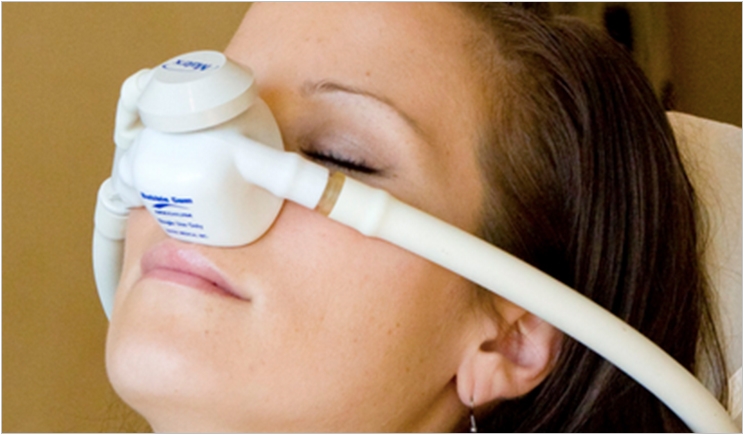
Nitrous oxide is essential to many dental procedures, though safety is a sometimes overlooked concern. The National Institute for Occupational Safety and Health (NIOSH) recently conducted its online Health and Safety Practices Survey of Healthcare Workers among 284 dental professionals in private practice to assess how well they meet best practices for using nitrous oxide and protecting themselves and their patients.
According to the survey, the use of primary engineering controls such as a nasal scavenging mask and/or local exhaust ventilation was nearly universal, reported by 93% of respondents treating adults and 96% of respondents treating children. However, 41% of those who treated adults and 48% of those who treated children did not check their equipment for leaks, while 13% of those who treated adults and 12% of those who treated children started the gas flow before the mask was applied to the patient. Other key lapses were noted as well.
The NIOSH recommends the use of properly fitted nasal scavenging masks, supplemental local exhaust ventilation when necessary, adequate general ventilation, regular inspection of gear for leaks, standard procedures to minimize exposure, periodic training, ambient air and exposure monitoring, and medical surveillance. James M. Boiano, MS, a member of the survey team, shared his insights and further recommendations with Dentistry Today.
Q: What are the primary dangers to both dental personnel and patients in nitrous oxide administration?
A: Acute exposure to nitrous oxide may cause lightheadedness, eye and upper airway irritation, cough, shortness of breath, and decreases in mental performance and manual dexterity. Chronic exposure to high levels of nitrous oxide among female dental assistants who worked in offices where scavenging equipment was not used was associated with an increased risk of spontaneous abortion and reduced fertility. Occupational exposure to nitrous oxide has also been associated with an increased risk of neurologic, renal, and liver disease.
Anesthesia machines are designed to deliver up to 70% (700,000 ppm) nitrous oxide with oxygen to patients during dental surgery. However, they are restricted from delivering higher concentrations to protect the patient from hypoxia, or deprivation of adequate oxygen supply at the tissue level.
Q: Are there national guidelines and standards for safe usage?
A: Yes. NIOSH and the Occupational Safety and Health Administration (OSHA) have developed guidelines for the safe administration of nitrous oxide. To protect dental healthcare workers from exposure to excessive levels of nitrous oxide, NIOSH recommends an exposure limit of 25 ppm as a time-weighted average during the period of anesthetic administration. OSHA does not currently have an occupational exposure limit for nitrous oxide.
Q: What are some of the most important best practices for safe usage?
A: Best practices for safe administration of nitrous oxide include the use of a patient nasal scavenging mask, regular inspection of the nitrous oxide delivery and scavenging equipment for leaks, and adequate room ventilation. Periodic monitoring of the air in the worker’s breathing zone and in the dental operatory is recommended to ensure nitrous oxide levels are kept below 25 ppm.
Q: How do dental personnel typically get trained in nitrous oxide usage?
A: Dentists, dental hygienists, and dental assistants receive training on nitrous oxide sedation practices in their school’s curriculum and/or by completing continuing dental education (CE) courses. Curriculum content and length of the CE courses as well as permit/certificate requirements vary by state. In some states, dental hygienists and dental assistants are not permitted to administer nitrous oxide to patients.
Q: Is there certification or CE required?
A: Yes. CE is required for dental practitioners who administer nitrous oxide to patients. National accreditation standards for dental education programs have been established by the Commission on Dental Accreditation. Accreditation standards have been developed for education programs in dental anesthesiology, dental hygiene, and dental assisting.
Q: The survey listed several types of breaches. Typically, who is responsible for ensuring such breaches don’t happen?
A: Although the owner of the dental practice is ultimately responsible for ensuring breaches don’t occur, all practitioners in the practice who administer nitrous oxide to patients are responsible for ensuring that proper safeguards are implemented to keep exposures to nitrous oxide as low as practicable.
Q: What should dentists do to ensure they meet best practices for safety?
A: Dentists and other dental practitioners who administer nitrous oxide must comply with state-specific dental board or regulatory agency regulations and training requirements.
Q: Where can dentists go for more information?
A: Dental practitioners who administer nitrous oxide can obtain additional health and safety information on the safe administration of nitrous oxide from NIOSH and OSHA. The ADA also offers recommendations for administration.
Related Articles
Child’s Attitude Plays a Big Role in Sedation’s Success
Single-Use Mask Designed for Access and Comfort
Patients Prefer Propofol for Sedation











